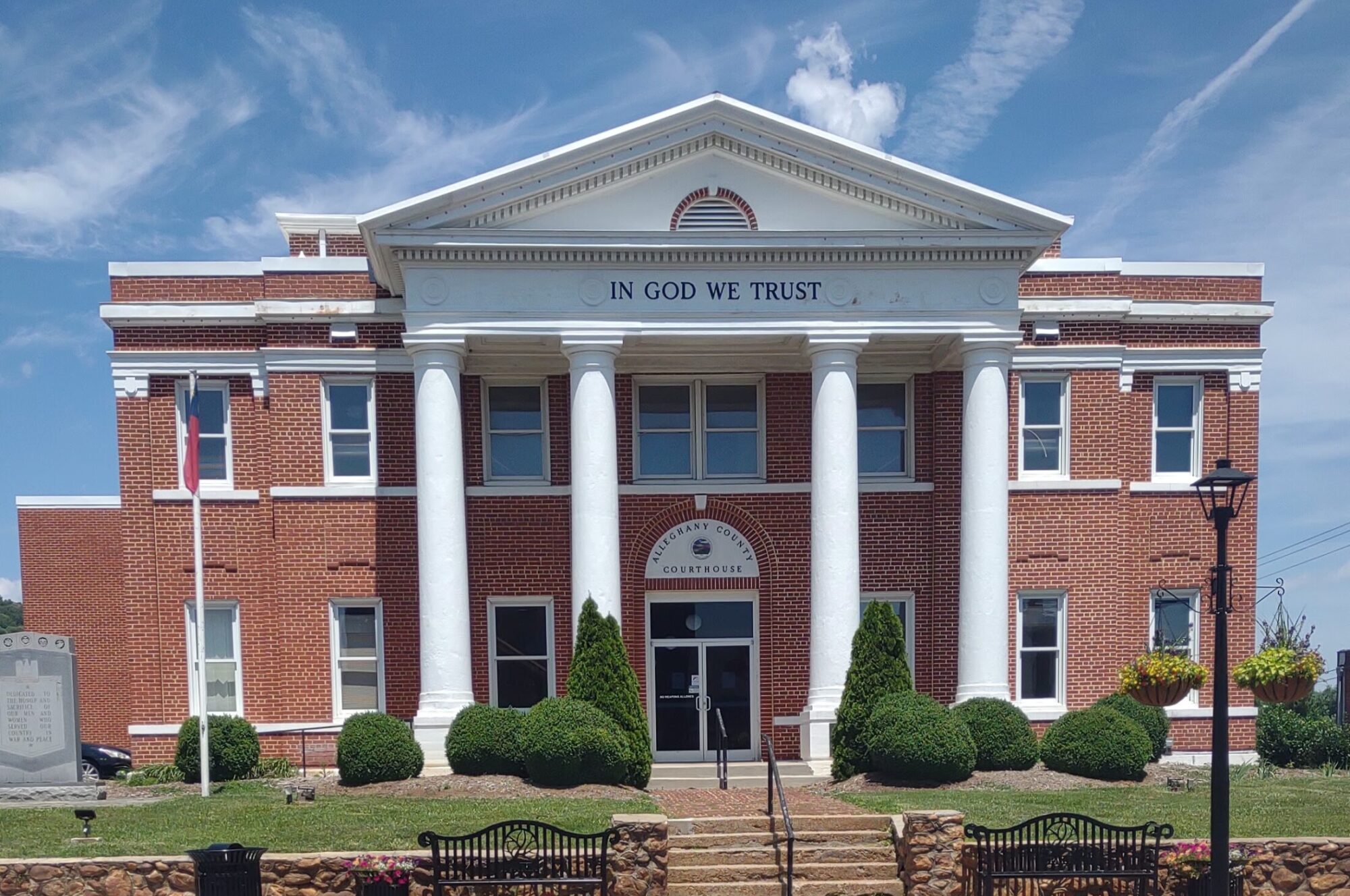
The Henderson County Courthouse, also known as the Historic Henderson County Courthouse and the Old Henderson County Courthouse, is a historic 3-story brick gold-domed Classical Revival style courthouse building located at One Historic Courthouse Square, corner of 1st and Main streets in Hendersonville, North Carolina. It is Henderson County‘s second courthouse and is adjacent to site of the 1840s courthouse which was razed upon its completion. Famed architect Frank Pierce Milburn was asked in 1903 to design the new courthouse, but the county commissioners rejected his design and instead hired Englishman Richard Sharp Smith, who was the resident architect of the Biltmore Estate after the death of Richard Morris Hunt in 1895. Construction by local builder W. F. Edwards began in 1904 and was completed in July, 1905. The old courthouse was closed for renovations after the completion of a new courthouse at 200 North Grove Street in 1995. The restored 1905 courthouse currently houses the Henderson County Heritage Museum and some government offices. On May 10, 1979, the Historic Henderson County Courthouse was added to the National Register of Historic Places. It is located in the Main Street Historic District. Wikipedia
St. John in the Wilderness (Flat Rock)

St. John in the Wilderness (also known as St. John-in-the-Wilderness) in Flat Rock, North Carolina was the first Episcopal Church in Western North Carolina.
It was consecrated by Bishop Levi Silliman Ives on August 28, 1836. Charles and Susan Baring, who considered Charleston, South Carolina too hot in the summer, were among the first settlers of Flat Rock in the 1820s. Other people moved from Charleston to Flat Rock, which Bishop Ives called a “new but interesting settlement” in 1837. The church started as a private chapel for the Barings, who later transferred the title to Bishop Ives and the Episcopal Diocese of North Carolina. 20 members “formed themselves into a congregation”.[2] A building from the 1850s is a contributing structure to Flat Rock Historic District, which is on the National Register of Historic Places.
St. John, named for John the Baptist, was unusual in that white people and slaves sat together in church. The first wedding performed in St. John’s was between two slaves. Later, slaves and free blacks were buried in the church’s cemetery.
Before 1958, St. John’s did not have enough members to stay open year-round, but the number of members has increased to 400. The church building was renovated in 2004.
Johnson Farm

Moss–Johnson Farm, also known as the Johnson Farm, is a historic farm complex located near Hendersonville, Henderson County, North Carolina, United States. The farmhouse was built between 1874 and 1880, and is a rectangular brick dwelling measuring 50 feet by 28 feet. Also on the property are the contributing clapboard summer house (1920), a granary and smokehouse (1880), a well, a barn (1923), a small dwelling (1933), and a hen house and pig barn. After 1970 the property was donated in several gifts to the Henderson County Board of Education for use as a farm museum. It was listed on the National Register of Historic Places in 1987.

